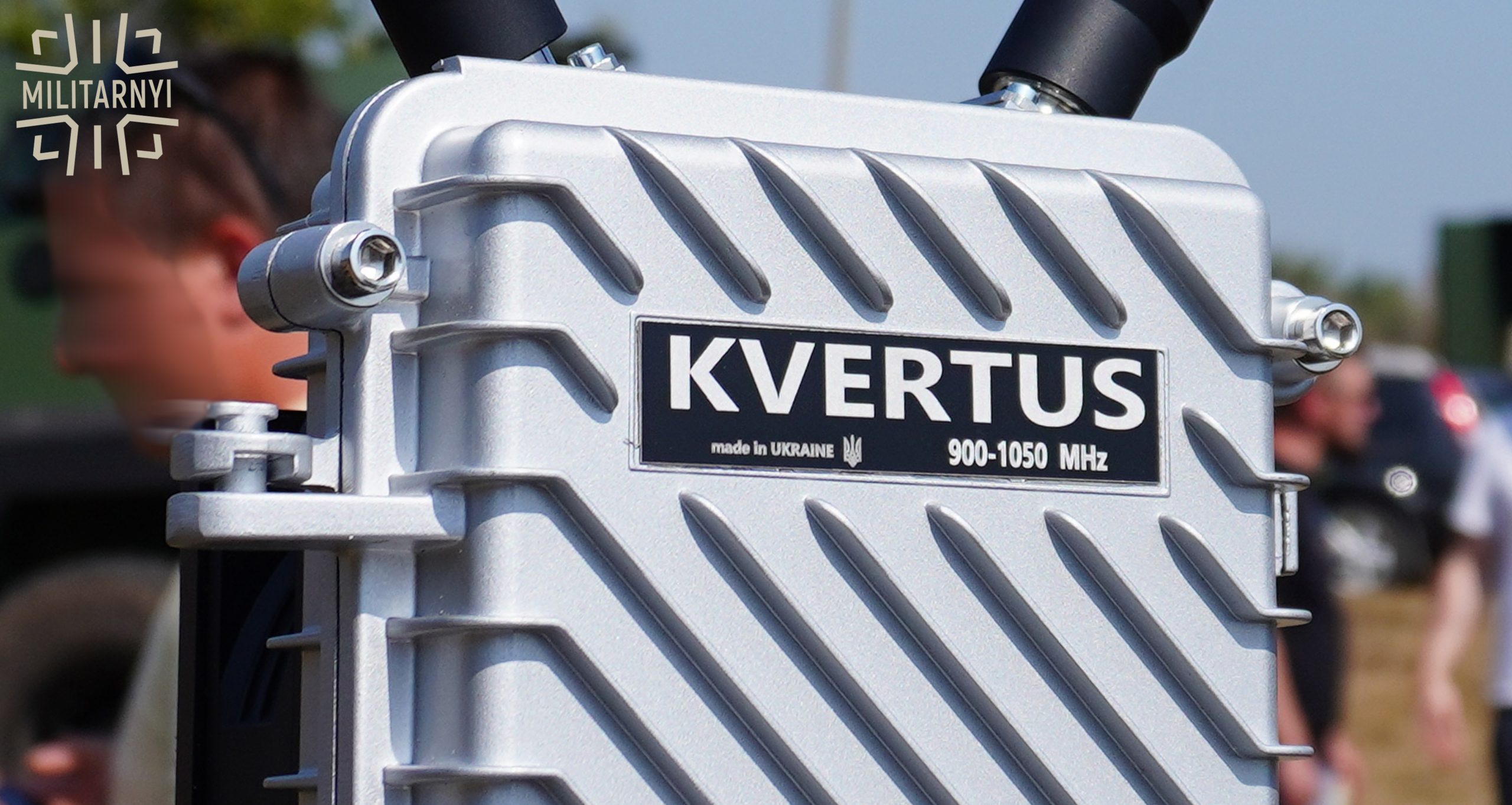

Drones and electronic warfare systems, which are crucial for countering them, have become synonymous with the full-scale Russian-Ukrainian war.
The ongoing evolution of drones and their control frequencies requires Ukrainian manufacturers to rapidly adapt to the shifting radio landscape of war. This also requires significant investment in both financial and human resources to quickly develop effective counter-UAV systems, which, due to their temporary relevance, need continuous improvement.
Militarnyi journalists attended the “Protect a Soldier from a Drone” event organized by Kvertus, a domestic manufacturer of electronic countermeasures.
The event featured the company’s new and existing products, demonstrating the capabilities of both directed and dome-type electronic warfare systems. It also addressed challenges related to selecting these systems, their application, and their significance in modern combat scenarios. Overall, the event underscored the crucial role of highly autonomous infantry electronic warfare systems in contemporary warfare.

The event was opened by Kvertus CEO Yaroslav Filimonov, and given the date of the event—August 29, the Day of Remembrance of the Defenders of Ukraine—the event began with a minute of silence.
Among the joint projects presented by Kvertus with other companies was the Novator-2 armored vehicle by Ukrainian Armor. The vehicle is equipped with the Kraken counter FPV F3 station, available in 30 and 50 W versions. According to available information, the cost of such systems ranges from UAH 350-400,000 per unit.
This device is designed to counter FPV drones in three radio bands covering the frequencies 700–1050 MHz. It has six corresponding jamming channels: two per band. These are the frequencies used to control most FPV drones.
The Kraken counter FPV F3, which weighs about 40 kilograms, is capable of providing directional or dome protection with omnidirectional antennas over a radius of more than 200 meters and can operate for up to 12 hours due to its active cooling systems.
The second “armored project” is a mobile command post vehicle based on the Canadian armored vehicle Roshel Senator. Senator’s electronics, especially the communication system, according to the test results, is able to work seamlessly with Kvertus systems.
The Kvertus team invited representatives of the Armed Forces of Ukraine to demonstrate how to use methods to counter enemy drones in simulated combat conditions.
For greater realism, a trench was constructed, the soldiers were dressed in gear and carried small arms, and an FPV drone with the ability to drop simulated munitions with a detonation function was flying over the improvised battlefield.

At first, the “kinetic” method of countering drones was demonstrated, when a fighter has visual contact with an enemy drone and fires at it with heavy small arms fire, in this case—with an RPK 7.62mm handgun. This method of counteraction, although ineffective, remains quite common on the battlefields of the Russian-Ukrainian war.
Despite the difficulty of hitting a small and highly maneuverable target, cases of neutralizing either enemy or Ukrainian FPV drones with small arms fire are not uncommon. In particular, Militarnyi has reported on the introduction of anti-drone guns in the Ukrainian Defense Forces and the Armed Forces of the Russian Federation.
Moreover, a case of destroying an FPV drone using a M242 Bushmaster 25-mm automatic cannon has been documented. Therefore, the “kinetic” method should not be discounted.
The second method demonstrated on the battlefield is the use of AD Counter FPV F2 M30 hemispherical radars, the family of six, covering frequencies from 420 to 1050 MHz. Depending on the conditions of use, the range of effective operation of the system is up to 150 meters, and the time of continuous operation is 24 hours.

The hardware component is cooled by an active system, powered by 220 V, 50 Hz AC power sources. The deployment time doesn’t exceed 30 seconds. AD Counter FPV F2 M30 is equipped with four omnidirectional collinear antennas.
The third method was the use of the AD G-6+ directed-action anti-drone gun, which has an effective range of up to 1.5 kilometers, depending on the conditions of use. This gun is efficient against FPV drones that use standard control frequencies, as well as against Mavic drones and low-cost Autel drone models.
The anti-directional action has a spatial angle of 30 degrees, and the hardware component is cooled by an active system. The weight of the gun is relatively light—only 6.5 kilograms—and the AD G-6+ is powered by removable rechargeable batteries.

The fourth method is the FPV Backpack F3 U, an electronic warfare backpack, which is designed to protect small infantry groups on the march from enemy FPV drones, bombers, and reconnaissance drones based on civilian copters. The Backpack F3 U’s omnidirectional collinear antennas and hardware provide a range of 150 meters, depending on the application.

The backpack can operate autonomously for 180 minutes, weighs no more than 15 kilograms, and is powered by a removable rechargeable battery. The backpack has six channels covering the spectrums from 850 to 5900 MHz.
Підтримати нас можна через:
Приват: 5169 3351 0164 7408 PayPal - [email protected] Стати нашим патроном за лінком ⬇
Subscribe to our newsletter
or on ours Telegram
Thank you!!
You are subscribed to our newsletter